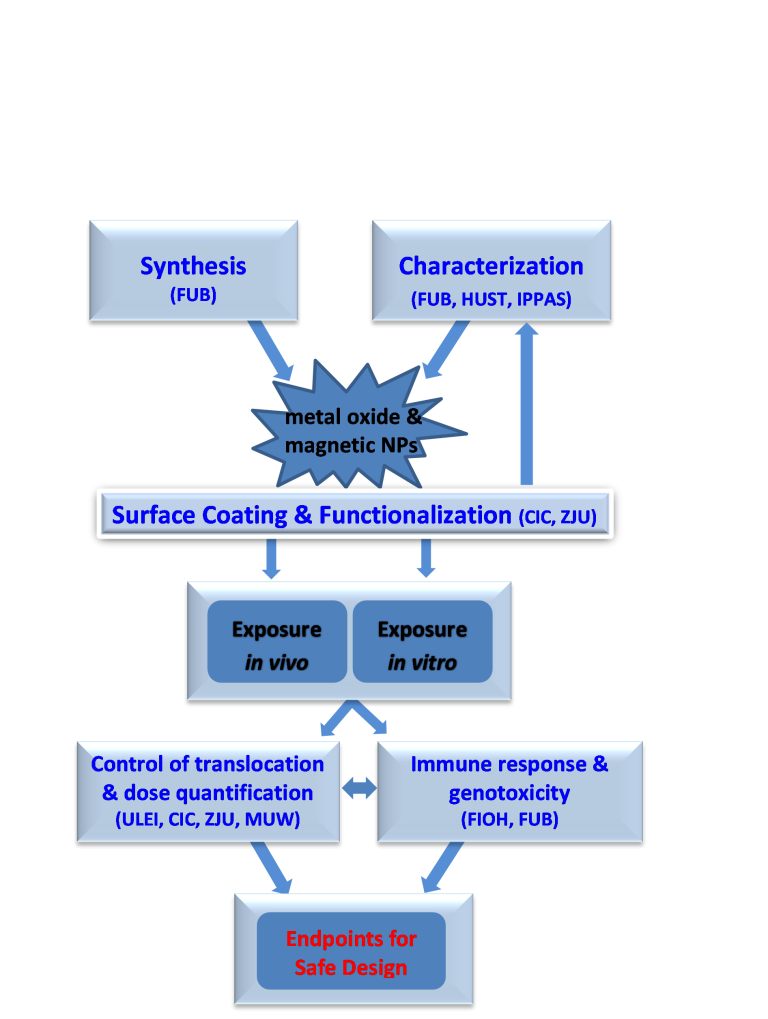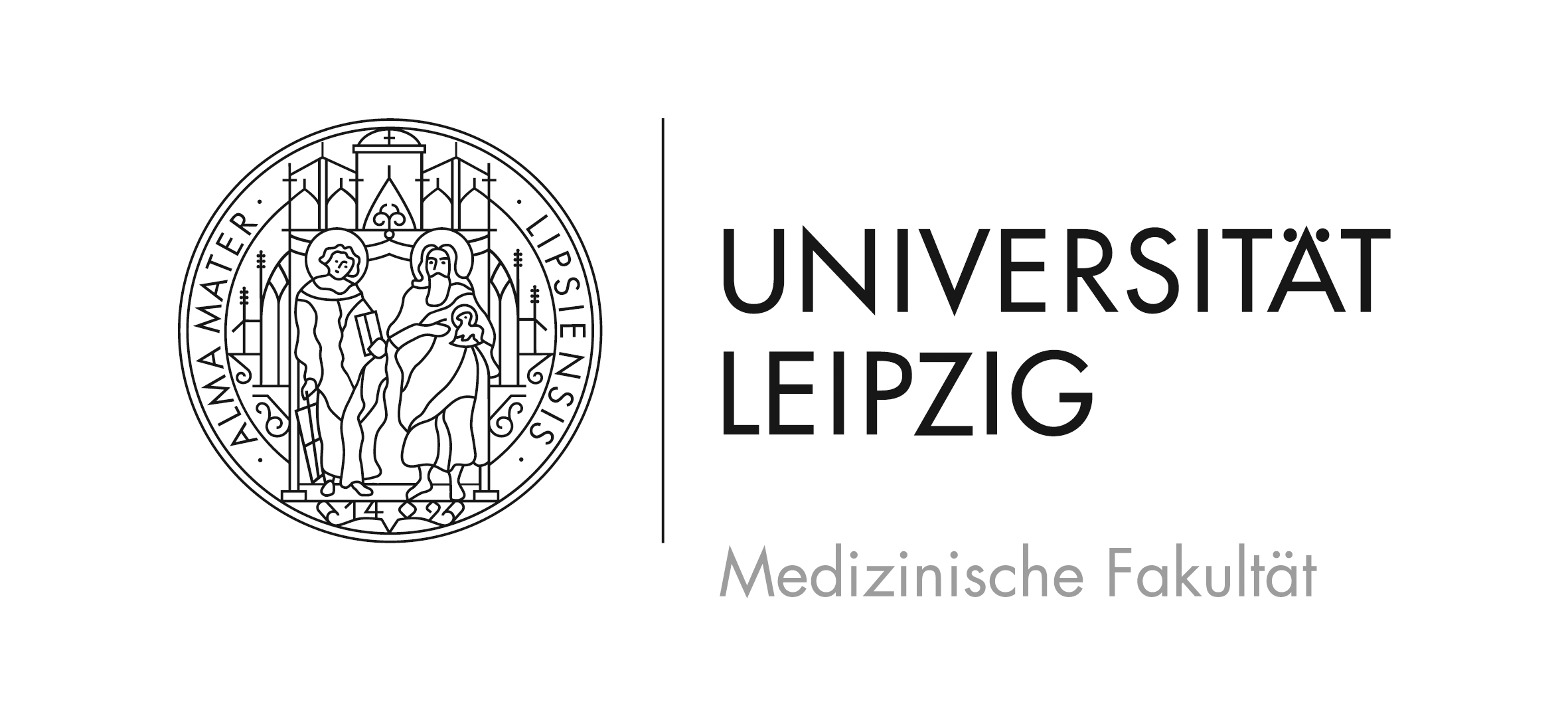Nanoparticle concept of "safe by design"
Translocation and Safe Design of Surface Engineered Metal oxide Nanoparticles (BRASINOEU)
SEVENTH FRAMEWORK PROGRAMME
Marie Curie Actions
People
International Research Staff Exchange Scheme
BRASINOEU aims to study the translocation and nanosafety issues of engineered metal oxide nanoparticles (NPs).The new scientific and technology developments of nanotechnology require a deeper knowledge of the effects of nanotechnology based products on human health. This knowledge is fundamental for the development of nanotechnology and to achieve its full acceptance. The concept of „safe by design“ is based on the application of nanosafety to design the nanomaterials in order to prevent or reduce their possible harm to humans and the environment. The project encompass the synthesis of metal oxide NPs, with a focus on magnetic oxides, their surface modification and post modification in biological fluids; immunological and genotoxicity studies, and translocation studies both „in vitro“ and „in vivo“. The project will seek to establish relationships between designed NP properties and their translocation at cellular and body level as well as their immune- and genotoxic response. This is a fundamental issue for the safe design of NPs. Also, the toxicological response will be studied as a function of the uptake dose of NPs. At cellular level a battery of techniques will be applied for localization and quantification of NPs: Transmission Electron Microscopy, Raman, Confocal Microscopy, Ion Beam Microscopy, etc. Positron Emission Tomography and Magnetic Resonance Imaging will be employed for biodistribution and quantification studies in animal models. BRASINOU is formed by an international team with the required and complementary expertise to address the proposed work from an international and multidisciplinary perspective. The project gathers internationally recognized groups in immunology, genotoxicity, nanoparticle synthesis, surface chemistry, biophysics, imaging and materials science. The complementarity of the groups involved in the project will help to develop new highly skilled professional and scientific horizontal connections.
Many engineered Nanomaterials (ENM) are based on molecules which are toxic per se. Some are non-degradable, and if humans are exposed to them, they can potentially accumulate in organs with unknown effects. Others, because of their surface properties or quantum effects, can have a catalytic activity that may interfere with biological processes and lead to oxidative stress harmful to cells and organs. In some cases, the nano-form may facilitate the uptake of molecules or ions at the cellular or body level in ways that would not otherwise be possible, and lead to toxic consequences.
Knowledge on the immune response, genotoxicity, and mechanism of uptake at cellular and organ levels is fundamental for the foundation of safety assessment of these materials. It is equally important to be able to correlate toxicity and biological fate with the physicochemical properties of ENM. Establishing correlations between size, charge, chemical composition of ENM, and their toxicities are vital for the application of the safe-by-design approach to the development of ENM and devices utilizing them to avoid risks to human health and the environment.
The scope of this project is to address issues related to the safety of ENM and nanotechnologies, and to assure the implementation of safety in ENM design and the development of applications incorporating ENM. The goals are reached through joint activities of an international team with a proven expertise in material science and toxicology and capable of facing the complex issues of toxicity of ENM. Through the exchange of Early and Experienced Researchers from Europe and Brazil and China we can reach a global approach, also highly important when aiming at achieving international standards on safety of ENM. The complementarity of the groups involved in the project will help to develop new professional and scientific horizontal connections through the global exchange of researchers, who will be trained in complementary disciplines and learn a variety of techniques necessary to address the complex issues of the interaction of ENM with biological matter and tools for the design of ENM and devices incorporating them.
The project will focus on the synthesis of metal oxide nanoparticles, as well as on magnetic NPs. A key aspect of the project will be to tune the surface chemistry of the NPs to find ways to increase biocompatibility and to control NP translocation, uptake and toxicity at cellular and body level.

NPs will be very extensively characterized regarding their physico-chemical properties and their behaviour in biological fluids. Size and shape will be studied by Transmission Electron Microscopy (TEM), Dynamic Light Scattering (DLS), Nanoparticle Tracking Analysis (NTA). Surface chemistry will be analyzed by XPS, IR/RAMAN. Additional characterization of NPs properties will be done by Scanning Electron Microscopy (SEM) and Atomic Force Microscopy (AFM) when required.
Mechanism of NP uptake, dose quantification and translocation of NPs at cellular and subcellular level as a function of surface modification will be studied with a variety of techniques, Ion Beam (IBM), Inductively Coupled Plasma Mass Spectrometry/Atomic Absorption Spectroscopy (ICP-MS/AAS) Confocal Raman Spectromicroscopy (CRM), Confocal Laser Scanning Microscopy, Total Internal Reflection Fluorescence microscope (TIRF), AFM, Attenuated Total Reflection Fourier Transform Infrared Spectroscopy (ATR-FTIR), Differential Scanning Calorimetry (DSC).
The translocation and the biokinetics of NPs will also be studied at the level of the organism. Positron Emission Tomography (PET) and Single Photon Emission Computed Tomography (SPECT) will be applied to image radiolabelled NPs in murine models following different ways of exposure. For magnetic NPs the biokinetics and the translocation will be studied by means of Magnetic Resonance Imaging (MRI). Additionally the amount of NPs at organ level will be determined by Mass Spectroscopy.
Project partners:
• University of Leipzig, Germany (ULEI)
• CIC biomaGUNE , Spain (CIC)
• Finnish Institute of Occupational Health, Finland (FIOH)
• Institute of Physics of Polish Academy of Sciences, Poland (IPPAS)
• Medical University of Warsaw , Poland (MUW)
• Zhejiang University , China (ZJU)
• University of Brasilia, Brasilia (FUB)
• Huazhong University of Science and Technology , China (HUST)


